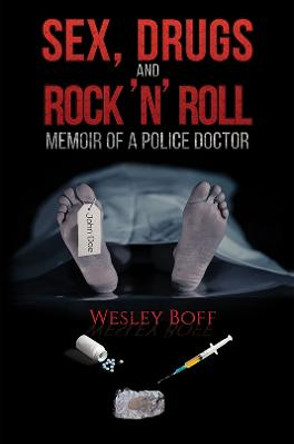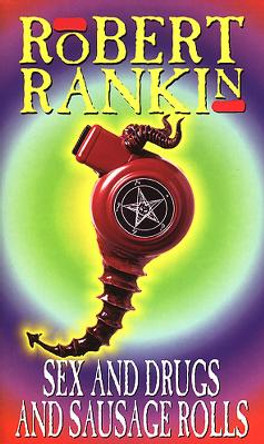Description
About the Author
Robert C. Cottrell has written over twenty books, including biographies of the radical journalist I. F. Stone, ACLU icon Roger Nash Baldwin, and Negro League founder Rube Foster. He is the author most recently of Two Icons: How Hank Greenberg and Jackie Robinson Transformed Baseball and America. Cottrell, professor of history and American studies at California State University, Chico, has also taught in London; Puebla, Mexico; and Moscow, Russia, in the latter instance as a Distinguished Fulbright Chair. He is currently working on a collective biography of four key members of the early twentieth-century American left: Crystal Eastman, John Reed, Inez Milholland, and Randolph Bourne.
Reviews
This massive and impressively researched look at the cultural revolutions in the U.S. in the post-WWII years is a perfect text for a college class on 1960s culture. Fully aware that 'the hippies of the 1960s, of course, were hardly the first countercultural figures to appear in the United States,' Cottrell (Icons of American Popular Culture) begins with detailed looks at four early seminal countercultural figures: Allen Ginsberg, whose poetry attacked the 'conservatism and conformity' of American 1950s culture; Jack Kerouac, whose novel 'On The Road' popularized the youthful image of 'the restless wanderer;' Timothy Leary, the most notable proselytizer for LSD; and author Ken Kesey, whose Merry Prankster commune 'kicked off the liberal employment of psychedelics.' Cottrell expertly shows how their outlaw images and ideas influenced almost every aspect of the 1960s counterculture: the political shift from traditional protest to the violence of the Weathermen; the popularization of the use of psychedelics for personal liberation; and the move from cities into country communes as an escape from the collapsing countercultural ideals in the 1970s. Cottrell believes that the positive aspects of Sixties culture live on, quoting Whole Earth Catalog editor Stewart Brand's belief that 'the counterculture's scorn for centralized authority provided the philosophical foundations of not only the leaderless Internet but also the entire personal-computer revolution.' * Publishers Weekly *
Cottrell begins this fine narrative of 1960s counterculture with a detailed examination of four 'godfathers' of the movement: Jack Kerouac, Allen Ginsberg, Timothy Leary, and Ken Kesey. He argues that the Beats, Leary's LSD experimentation and promotion, and Kesey's Merry Pranksters provided the foundation of the counterculture. Relying on secondary literature contemporary to the era, Cottrell traces the various threads of the counterculture with a critical eye, emphasizing the music, literature, and politics that both shaped and reflected the prevalent ideas of the 1960s. This is no nostalgic tour; Cottrell also treats the underside of the 1960s, reflecting on the drug-ridden demise of Haight-Ashbury, the violence at Altamont, and the rise of radical groups such as the Weathermen. Yet the author strives for objectivity by treating the counterculture on its own terms and considering the music young people listened to, the books they read, and what they did. Ultimately, he concludes that the counterculture cannot be dismissed as ephemeral-its impact on the generation of baby boomers was significant. Or, as Cottrell suggests by quoting Charles Dickens, 'It was the best of times, it was the worst of times. ...' Summing Up: Highly recommended. All levels/libraries. * CHOICE *
It's all here-not only the 1960s counterculture, but where it came from, how it happened, and how it faded away. Cottrell's book is a tour de force, with meticulous research, engaging writing, and fascinating subject matter. -- Timothy Miller, University of Kansas
Well researched and well written, Robert Cottrell's Drugs, Sex and Rock 'n Roll recounts the rise of the colorful hippies, the cults, the communes, and the conspiracies that transformed the culture of the Cold War. A near-perfect history for those who didn't live through the 1960s, as well as for those who can remember the smell of teargas, pot, and patchouli, this book recognizes the original literary achievements of Allen Ginsberg, Ken Kesey, Richard Brautigan and more. Bravo! -- Jonah Raskin, author of A Terrible Beauty, The Wilderness of American Literature
Sex, Drugs, and Rock 'n' Roll is a very lively look at the 1960s counterculture. Robert Cottrell does a great job of capturing the climate and mood of the era in ways that will appeal both to people who lived through the 1960s era and also to the millennial generation.
Robert Cottrell's book is engagingly written, broadly conceived, and critical without being dismissive. He places the Sixties counterculture in the long stream of American cultural radicalism, a subject he knows better than anyone. -- David Steigerwald, The Ohio State University
Awards
Winner of Washington Book Publishers 2015 Book Design & Effectiveness Competition: Typographic Cover (Tied First Place).
Book Information
ISBN 9781442246065
Author Robert C. Cottrell
Format Hardback
Page Count 452
Imprint Rowman & Littlefield
Publisher Rowman & Littlefield
Weight(grams) 816g
Dimensions(mm) 238mm * 163mm * 37mm








